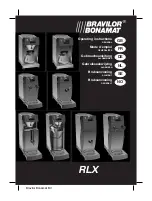
ud_fr_st_sv_00467 022013
VII
EN
When using current supply distributors, twin head wire feeder fixtures etc.,
please note the following: The electrode on the unused welding torch/
welding tongs is also current carrying. Please ensure that there is sufficient
insulating storage for the unused welding torch/tongs.
In the case of automated MIG/MAG applications, ensure that only insulated
filler wire is routed from the welding wire drum, large wirefeeder spool or
wirespool to the wirefeeder.
Stray welding
currents
(continued)
EMC device
classifications
Devices with emission class A:
-
are only designed for use in an industrial setting
-
can cause conducted and emitted interference in other areas.
Devices with emission class B:
-
satisfy the emissions criteria for residential and industrial areas. This
also applies to residential areas in which power is supplied from the
public low-voltage grid.
EMC device classification as per the rating plate or technical specifications
EMC measures
In certain cases, even though a device complies with the standard limit values
for emissions, it may affect the application area for which it was designed (e.g.
when there is sensitive equipment at the same location, or if the site where
the device is installed is close to either radio or television receivers).
If this is the case, then the operator is obliged to take appropriate action to
rectify the situation.
Examine and evaluate any possible electromagnetic problems that may
occur on equipment in the vicinity, and the degree of immunity of this
equipment, in accordance with national and international regulations:
-
safety features
-
mains, signal and data-transmission leads
-
IT and telecoms equipment
-
measurement and calibration devices
Ancillary measures for preventing EMC problems:
a) Mains supply
-
If electromagnetic interference still occurs, despite the fact that the
mains connection is in accordance with the regulations, take additional
measures (e.g. use a suitable mains filter).
b) Welding cables
-
Keep these as short as possible
-
Arrange them so that they run close together (to prevent EMI problems
as well)
-
Lay them well away from other leads.
c) Equipotential bonding
d) Workpiece grounding (earthing)
-
where necessary, run the connection to ground (earth) via suitable
capacitors.
e) Shielding, where necessary
-
Shield other equipment in the vicinity
-
Shield the entire welding installation.
Summary of Contents for 3100 CSA
Page 2: ......
Page 4: ......
Page 34: ...18 Schutzgasmenge einstellen 1 1 3 2 2 4 1 2 3 3 1 2 4 3...
Page 50: ......
Page 80: ...18 Setting the shielding gas flow rate 1 1 3 2 2 4 1 2 3 3 1 2 4 3...
Page 96: ......
Page 126: ...18 R glage de la quantit de gaz protecteur 1 1 3 2 2 4 1 2 3 3 1 2 4 3...
















































